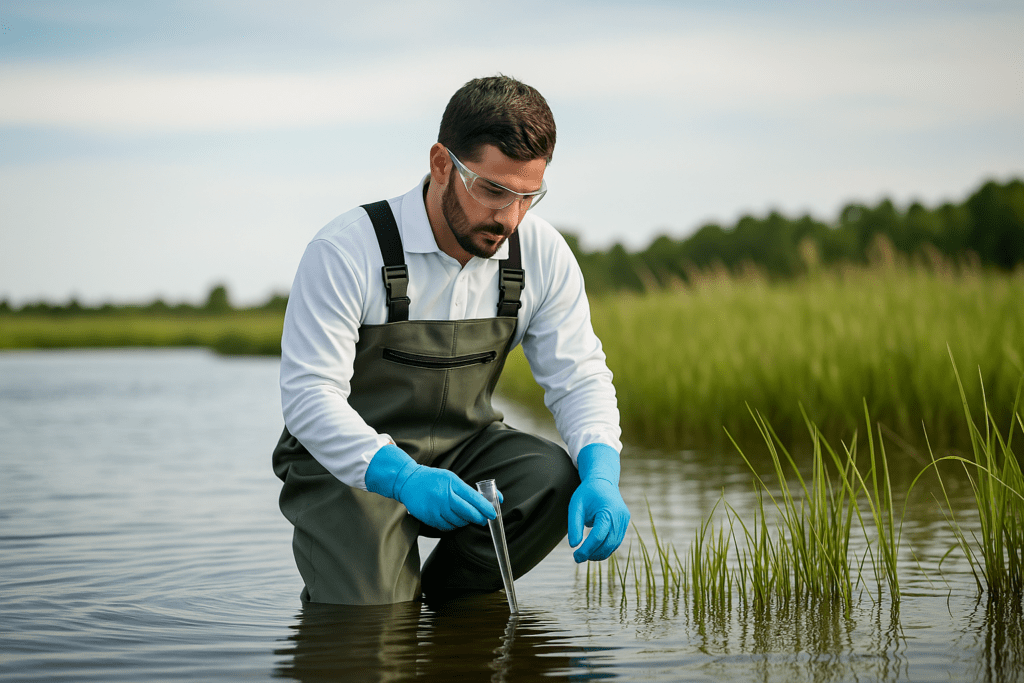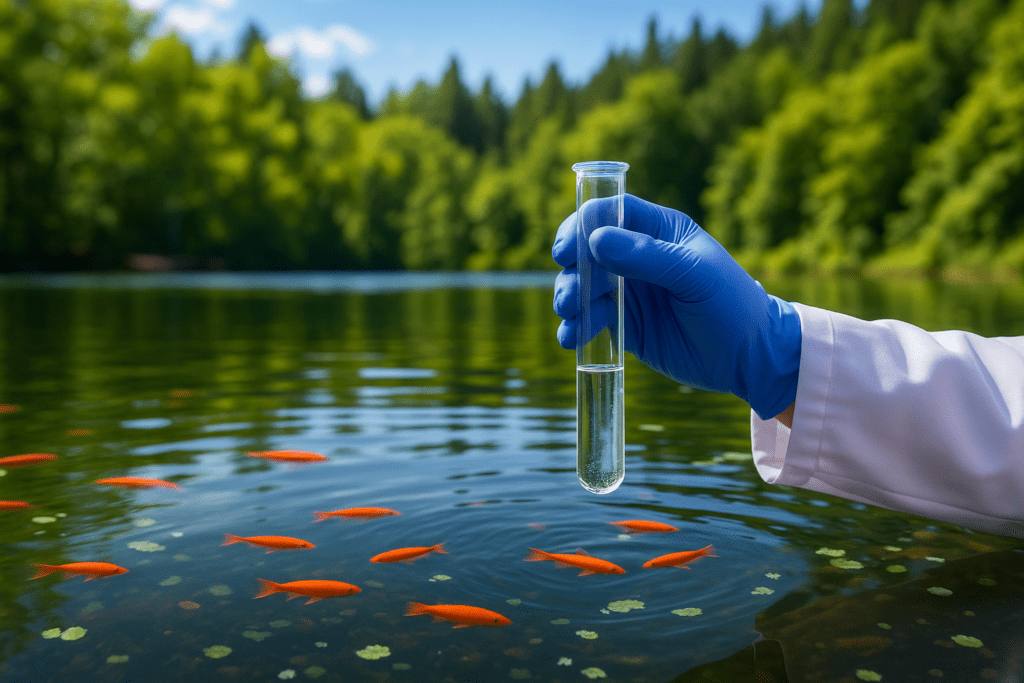Why eDNA Matters
eDNA refers to the genetic material (nuclear, mitochondrial, or chloroplast DNA) that is released by an organism (as gametes, dead skin cells, feces, urine, mucus, etc.) into its environment and can be collected from that environment using water, sediment, or soil sampling.
The application of eDNA testing is particularly advantageous for aquatic and semiaquatic species, as DNA shed from the target organism is transported through the aquatic environment, improving the ability to detect the target species.
eDNA testing enables more informed decision-making about biodiversity and ecosystem health due to its enhanced sensitivity over conventional methods. These methods are time- and labour-intensive, subject to observer bias, and limited in their ability to confirm the distribution of cryptic species or those with low population abundance (e.g., endangered species and those in the early stages of invasion).
eDNA testing is quickly becoming a reliable and robust technique that complements traditional environmental monitoring. It should be recognized that traditional survey techniques still have certain advantages over eDNA testing—the most relevant of which may be their ability to distinguish live species and the different life stages of those species. Furthermore, standards for eDNA testing across laboratories are not yet established but need to be carefully considered, creating maximum utility for this evolving technique.

Setting the Standard in Canada
Mérieux NutriSciences is proud to be the first laboratory in Canada accredited for eDNA testing by the Standards Council of Canada under the rigorous ISO/IEC 17025 standard. We are committed to collaborating with the eDNA community to develop consensus-based standards that support more reliable interpretation of eDNA results.

Advantages of Environmental DNA Testing
eDNA testing has several advantages when compared to conventional survey methods:
- High sensitivity: Detects low-abundance or early-stage species
- Time-saving: Reduces time spent in the field
- Cost-efficient: Lowers equipment, travel, and labour costs
- Non-invasive: No disruption to habitats or wildlife
- Permit-free: Often doesn’t require regulatory approval
- Unbiased: Removes human identification errors
- Safer: Minimizes time in risky field conditions
- Accurate: Precisely detects species through DNA
- Retroactive: Allows testing of archived samples
- Flexible timing: Extends survey opportunities beyond seasonal limits

Environmental DNA Testing Protocol
Environmental DNA (eDNA) testing is a powerful tool for identifying the presence of species in aquatic and semiaquatic environments. Most detection methods use quantitative polymerase chain reaction (qPCR)—a highly sensitive and specific technique that amplifies tiny amounts of DNA and confirms detection using a fluorescent signal.
Because eDNA is typically found in low concentrations and affected by environmental factors, results are qualitative (detect/non-detect) rather than quantitative. This makes reliable assay design and validation essential for accurate interpretation.
To ensure confidence in our results, Mérieux NutriSciences is licensed to use the IntegritE-DNA™ method, developed by Dr. Caren Helbing at the University of Victoria. This innovative approach adds a built-in quality check to confirm DNA integrity and rule out common inhibitors—significantly reducing the risk of false negatives.
Each sample is tested in eight replicates, with strict positive and negative controls, to provide strong statistical confidence. In addition, the extracted eDNA can support testing for multiple species without needing to recollect samples—saving time and reducing overall costs.
By combining high-sensitivity detection with rigorous quality assurance, the IntegritE-DNA™ method supports more accurate, efficient, and trusted eDNA monitoring across Canada.

Step-by-Step Protocol
Mérieux NutriSciences is licensed to use the IntegritE-DNA™ method developed by Dr. Caren Helbing’s laboratory through the University of Victoria Industry Partnerships. This validated approach includes the following steps:
-
Sample Collection & Filtration: Water is collected, filtered, and preserved to protect eDNA quality.
-
DNA Extraction: eDNA is isolated from the filtered sample.
-
Integrity Check: The IntegritE-DNA™ assay confirms amplifiable DNA is present and free of inhibitors.
-
Species Detection: Target DNA is detected using species-specific qPCR, run in eight replicates for accuracy.
-
Multi-Species Testing: Each extract supports 4–5 assays, enabling efficient detection of multiple species without re-sampling.



